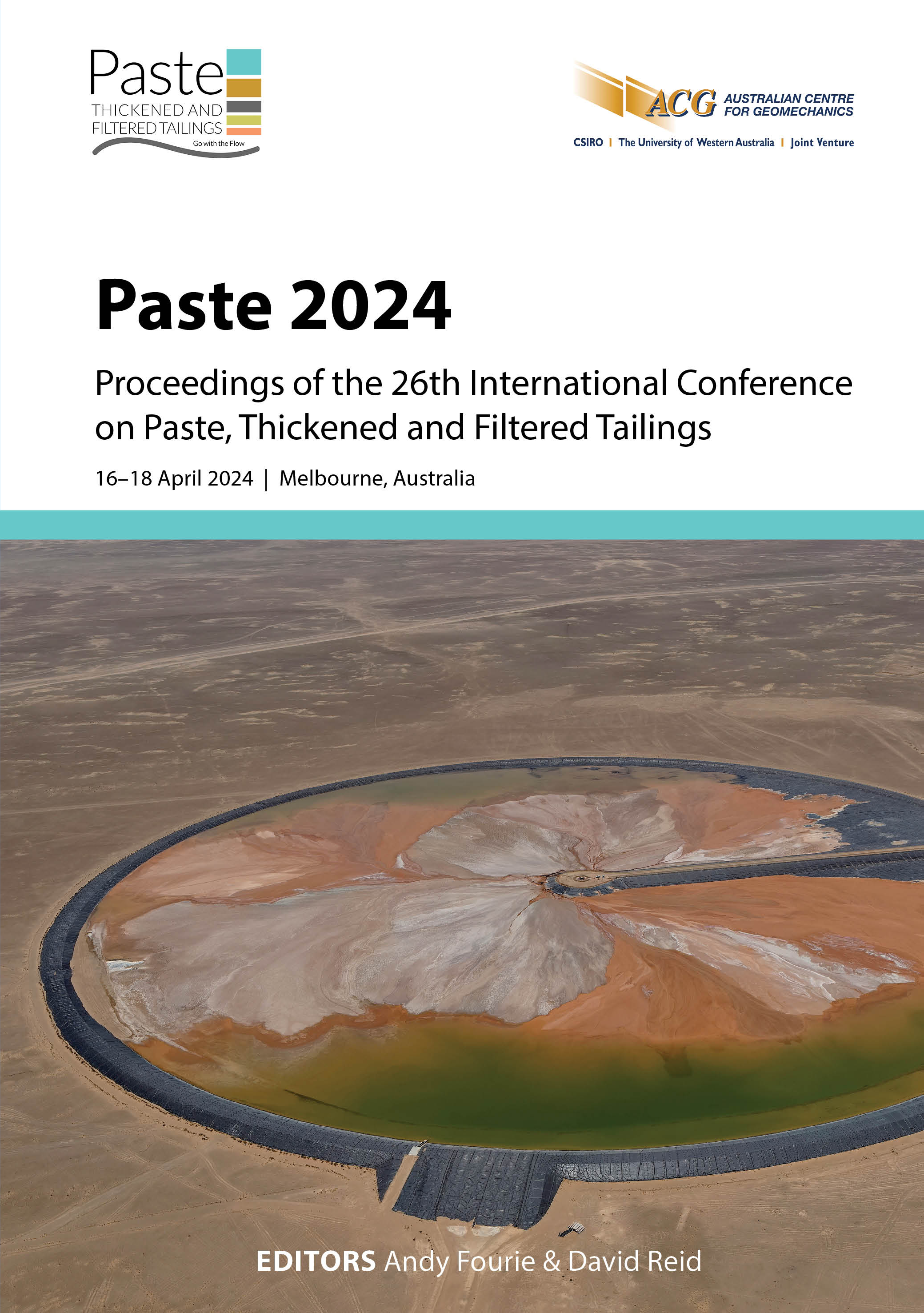Co-disposal of waste rock with unclassified tailings as cemented paste backfill at Jinchuan Nickel Mine

|
Authors: Wu, AX; Wu, PJ; Zou, L; Ruan, ZE; Chen, ZJ; Mo, YB; Wang, JD; Wang, SY |
DOI https://doi.org/10.36487/ACG_repo/2455_37
Cite As:
Wu, AX, Wu, PJ, Zou, L, Ruan, ZE, Chen, ZJ, Mo, YB, Wang, JD & Wang, SY 2024, 'Co-disposal of waste rock with unclassified tailings as cemented paste backfill at Jinchuan Nickel Mine', in AB Fourie & D Reid (eds), Paste 2024: Proceedings of the 26th International Conference on Paste, Thickened and Filtered Tailings, Australian Centre for Geomechanics, Perth, pp. 467-474, https://doi.org/10.36487/ACG_repo/2455_37
Abstract:
Jinchuan Nickel Mine (JNM) is the first mine to adopt cemented paste backfill (CPB) in China. It has a mechanised downward backfilling mining method with the world’s largest continuous stoping area. There are three mining areas at JNM. The second mining area of JNM has experienced three generations of CPB systems, the biggest difference among which is dewatering equipment. This paper mainly introduces the thirdgeneration CPB system, which was established in 2021. Through this system, the waste rock and unclassified tailings are co-disposed. To achieve a stable paste concentration and desirable strength of CPB body, a deep cone thickener (DCT) is applied and waste rock is used as coarse aggregates. The DCT with a diameter of 16 m can achieve a capacity of 104 t/h and an underflow concentration of 60% solids concentration by mass (wt%). A two-stage, double-shaft, horizontal mixer with a capacity of 100–120 m³/h is used to mix the thickened tailings, waste rock, and cement homogeneously to prepare the paste, and then the paste is transported to the underground stope by a piston-type positive displacement pump. The paste concentration is 77–79 wt%, the cement dosage is 25 wt%, and the tailings–waste rock ratio is 4:6. As a result, the paste is non-stratification, non-segregation, and non-bleeding. The slump is more than 23 cm. The uniaxial compressive strengths of the CPB body after curing for seven days and 28 days are more than 3 MPa and 5 MPa, respectively. The third-generation CPB system contributes greatly to the mechanised downward backfilling mining method at JNM.
Keywords: cemented paste backfill, co-disposal, waste rock, unclassified tailings, deep cone thickener
References:
Wu, A, Ruan, Z, Bürger, R, Yin, S, Wang, J & Wang, Y 2020, ‘Optimization of flocculation and settling parameters of tailings slurry by response surface methodology’, Minerals Engineering, vol. 156, no. 30, pp. 106488.
Wu, A, Ruan, Z & Wang, J 2022, ‘Rheological behavior of paste in metal mines’, International Journal of Minerals, Metallurgy and Materials, vol. 29, no. 4, pp. 717–726.
Yang, Z 2017, ‘Key technology research on the efficient exploitation and comprehensive utilization of resources in the deep Jinchuan nickel deposit’, Engineering, vol. 3, no. 4, pp. 559–566.
© Copyright 2025, Australian Centre for Geomechanics (ACG), The University of Western Australia. All rights reserved.
View copyright/legal information
Please direct any queries or error reports to repository-acg@uwa.edu.au
View copyright/legal information
Please direct any queries or error reports to repository-acg@uwa.edu.au
